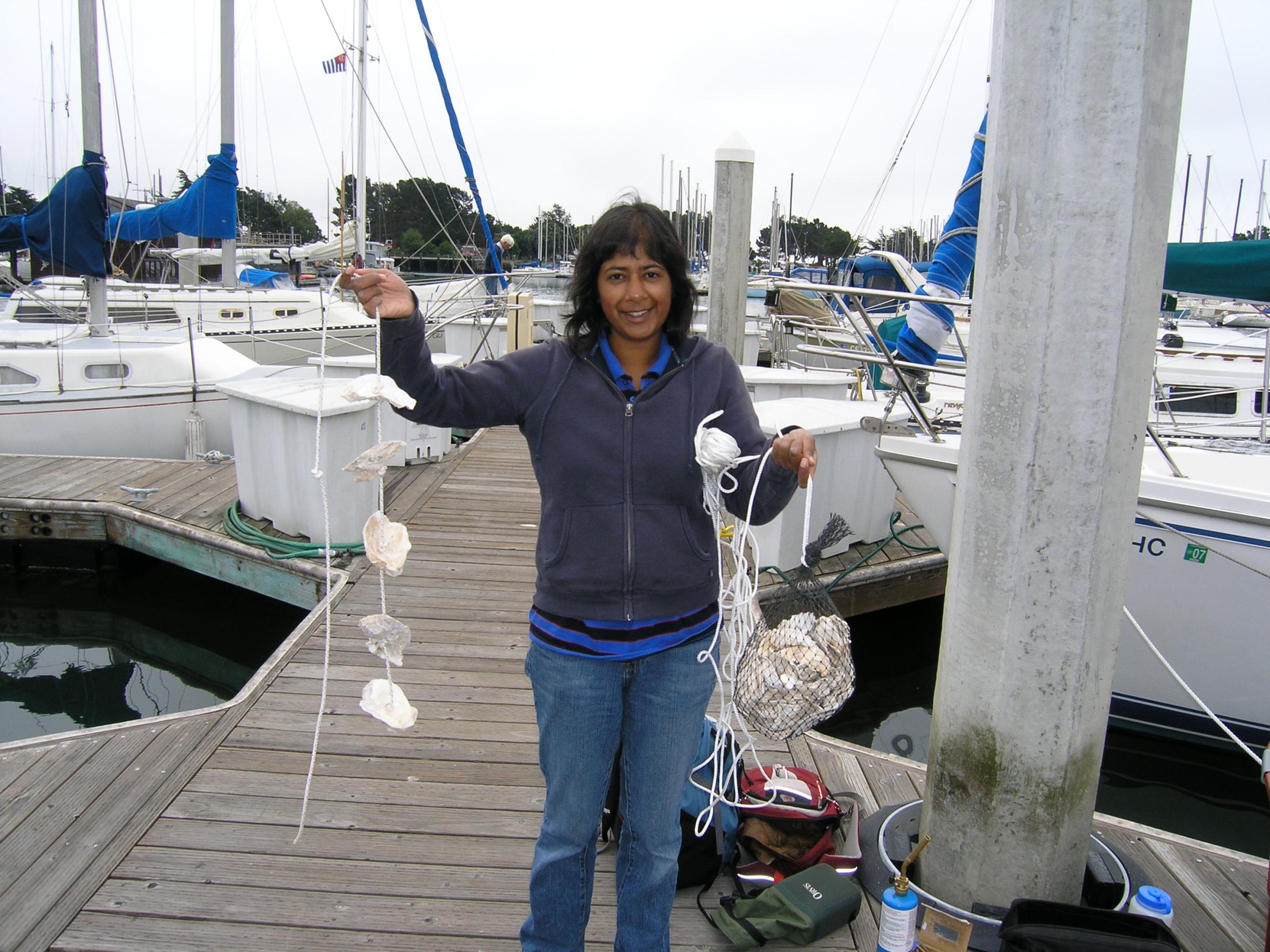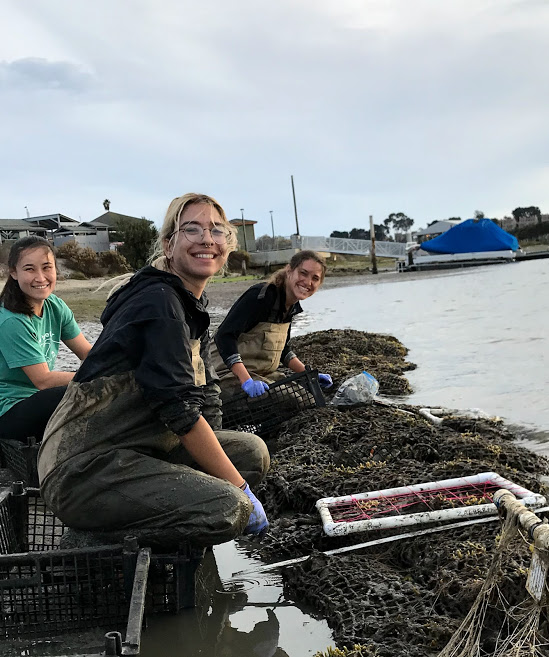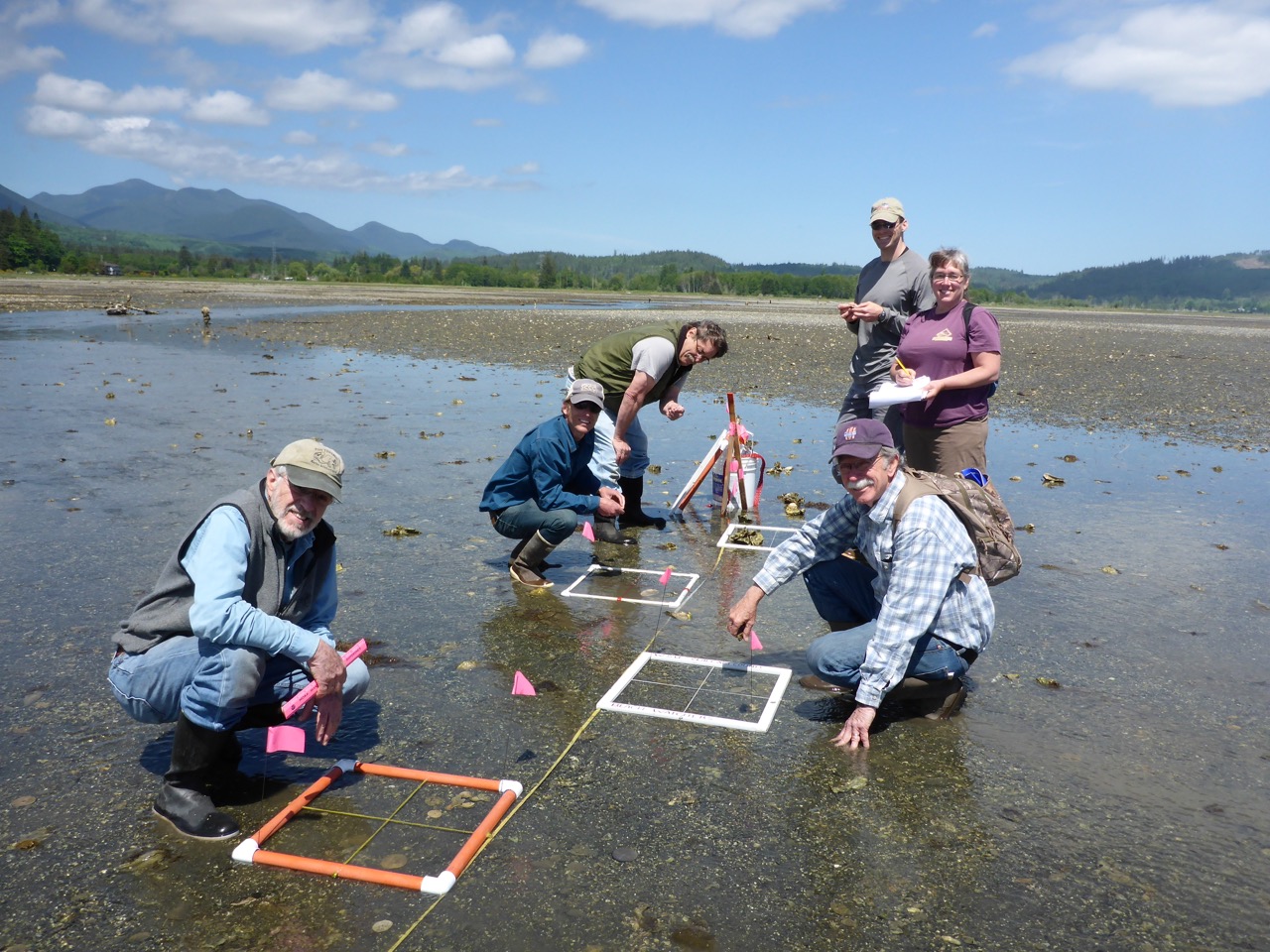
Monitoring -- repeated assessments over time using consistent protocols -- is an important tool to track Olympia oyster populations over time, and also to document progress of restoration projects. Monitoring occurs to some extent through the entirety of the oyster’s range from Baja California to British Columbia. Monitoring efforts in the early 2000s assessed population status throughout the range (Polson and Zacherl 2009), finding that oyster density varied greatly. In some bays within the range, there is little known about the distribution and abundance since these earlier records, whereas in other parts of the range, there are consistent long-term efforts or formalized plans in place to track populations. Monitoring methods focus primarily on adult density and size frequency distribution, and secondarily on settlement and recruitment, potential predators (e.g. oyster drills) and competitors (e.g. Pacific oyster, Crassostea gigas), and other environmental conditions. Though some guidelines exist for using universal metrics for monitoring Olympia oysters (Baggett et al. 2014, Wasson et al. 2015), methods and parameters monitored are not consistent throughout the range.

In the southern portion of the range in Baja California, Mexico, there is limited information about the distribution and abundance of the Olympia oyster. Early surveys revealed both apparent local extinctions, and some of the highest maximum densities of the species (Polson and Zacherl 2009). Surveys in 2019 in eight estuaries in the Baja Peninsula provided new information to document the status of the species, as well as that of C. gigas and oyster drills. These surveys provided foundational data for designing a long-term monitoring plan and identifying restoration and enhancement goals for the species.
Along the west coast of the United States in California, Oregon, and Washington, there are ongoing monitoring efforts in the majority of estuaries where Olympia oysters are present. Populations vary widely through this long stretch of coastline, as do the importance of other factors in affecting these populations (Wasson et al. 2015). Monitoring has shown that many bays have highly variable recruitment, and near or total failure in some years in bays like Elkhorn Slough in central California and Fidalgo Bay in Washington (Wasson et al. 2016). Potential predators and competitors are monitored in some bays; for example, oyster drills are monitored in parts of San Francisco Bay where they overlap with oysters, and C. gigas is monitored in several southern California bays like Newport Bay.
In the northernmost portion of the range in Canada, Olympia oysters were listed as a species of Special Concern under the Species at Risk Act (SARA) in 2003. A SARA Management Plan was developed in 2009, and Fisheries and Oceans Canada has completed field verification surveys for Olympia oyster presence at beaches, developed survey protocols to monitor densities, identified index sites and reviewed the density at these sites, and sampled shell lengths to look at length frequency and recruitment. Fourteen index sites were chosen to monitor density within their range in Canadian waters. Sites have been surveyed at least twice since 2009, with a goal to monitor all of them at least every five years.


